Protection of Biodiversity
In addition to our efforts to conserve and restore natural capital, as an R&D-oriented pharmaceutical company, we set our own reduction targets for hazardous chemical substances and work to minimize chemical substance risks throughout the product life cycle in order to pass on our irreplaceable earth to future generations.
Mid-Term Environmental Goals 2030 and FY2024 Results
| Material issues | KPIs | Goals (Base year 2019) | 2024 results |
|---|---|---|---|
| Protection of Biodiversity (Reduction of environmental load) |
Chemical substance management (SVHC*2) |
After 2021, manufacturing processes without using SVHC-listed chemicals are established for all Chugai original candidate molecules by commercial productions. | Conduct monitoring for SVHC guidelines |
| Hazardous waste reduction | 5% reduction by 2025*1 10% reduction by 2030*1 |
0.4%increase |
- *1 Per total floor area (Excluding leased properties)
- *2 Substances of Very High Concern
Reduction of Hazardous Chemicals
The Chugai Group not only appropriately manages and disposes of chemical substances that may have harmful effects on human health and ecosystems, but also promotes initiatives to reduce their use.
Change in Hazardous Waste Emissions
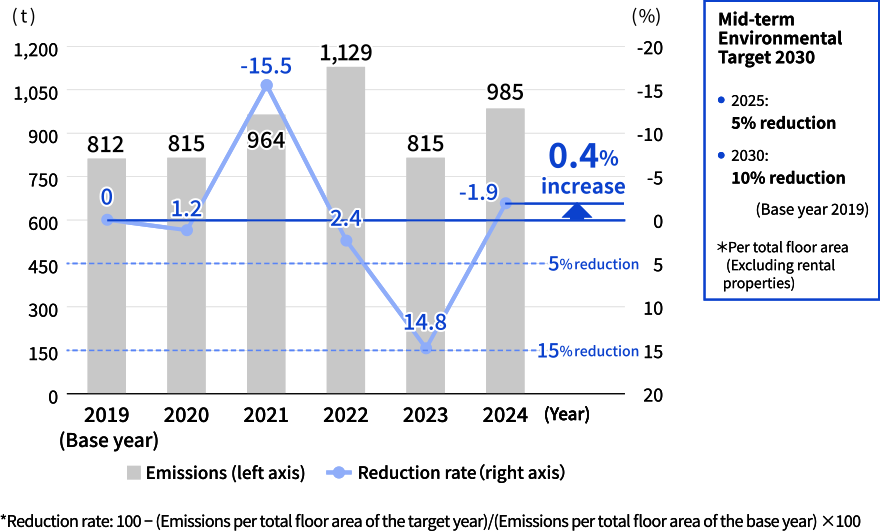
In 2024, the amount of hazardous waste (waste that falls under specially controlled industrial waste) generated was 985 tons, an increase of 19.5% from the previous year. The increase was due to switching from SVHC-listed N,N-dimethylformamide to a non-SVHC alternative during manufacturing.
Reduction in the use of hazardous chemicals
The Chugai Group has set a medium-term environmental target for establishing manufacturing processes through commercial production, that do not use compounds listed in the SVHC (Substances of Very High Concern) candidate list under REACH regulation for all Chugai original candidate molecules after 2021. We established guidelines for the use of SVHC in 2021 and are reducing the use of hazardous chemicals based on them.
Handled Amounts of Chemical Substances Covered by PRTR Law
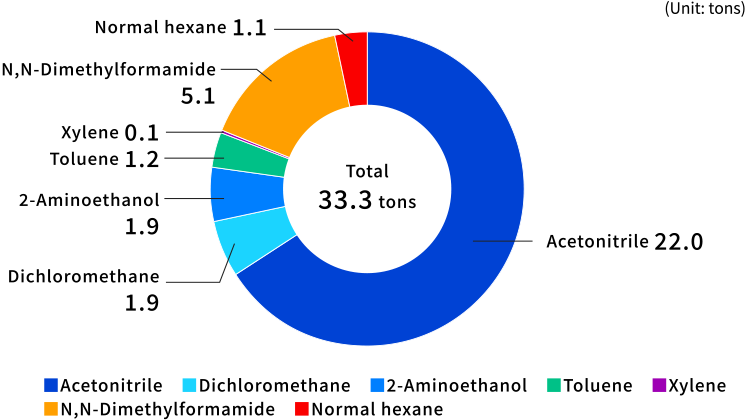
(Total period: April 2023 - March 2024)
The total volume of substances covered by the PRTR Law *1 was 33.3 tons. The use of N,N-dimethylformamide, an SVHC-listed substance used in manufacturing, was significantly reduced by adopting a new alternative substance not subject to the SVHC designation.
- *1 Abbreviation for “Act on the Assessment of Releases of Specified Chemical Substances in the Environment and the Promotion of Management Improvement”
Air Pollution Prevention and Associated Measures
Based on the Air Pollution Control Act and various prefectural ordinances, the Chugai Group measures emissions of nitrogen oxides (NOx), sulfur oxides (SOx) and soot, verifying compliance with emissions standards before releasing them, and is working to reduce them.
Change in NOx emissions
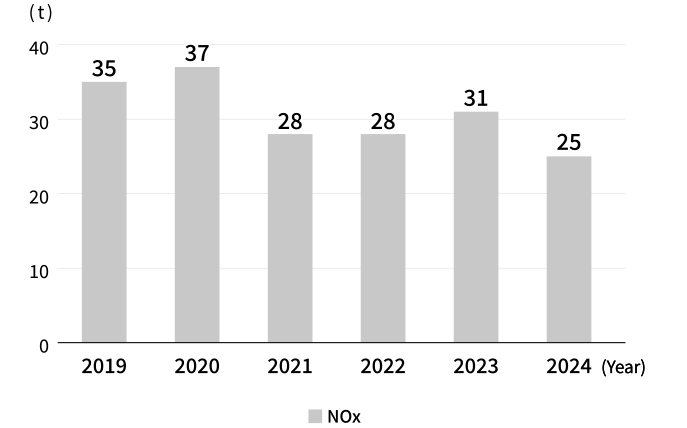
In 2024, NOx emissions totaled 25 tons, a reduction of 6 tons compared to 2023. We are working to prevent air pollution by measures such as upgrading our cogeneration system to low NOx models.
Change in SOx and Soot Emissions
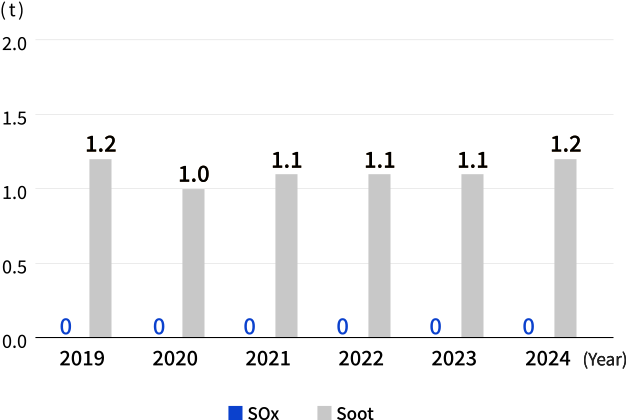
In the second half of 2014, we began switching from heavy oil to city gas as the main fuel for our once-through steam boiler heat source equipment. This fuel conversion has significantly reduced SOx emissions and maintained their low level. In addition, air pollutant emissions from all sites remain well below environmental standards.
Soil Pollution Prevention and Associated Measures
Based on the Soil Pollution Control Act and various prefectural ordinances, the Chugai Group conducts appropriate soil surveys in compliance with the law. If soil contamination is confirmed, we will consult with the local government and take appropriate measures to prevent the spread of the contamination and clean up the site.
Water Conservation Activities
Implementation of WET Testing
From the perspective of biodiversity conservation, the Chugai Group began conducting WET*3 testing in 2013 to verify the impact on local ecosystems of wastewater discharge from its business sites, not only to ensure that wastewater standards are met by law, but also to comprehensively understand and evaluate the impact of chemical substances contained in the wastewater. In 2024, all plants and laboratories conducted annual WET tests and confirmed that there were no problems.
Water Source Conservation Activities
Water is not only one of the essential raw materials in pharmaceutical manufacturing, but also an irreplaceable resource necessary for a sustainable society. The Chugai Group is committed to reducing water usage and managing wastewater, while also engaging in water source conservation through forest maintenance activities at our production sites. These efforts are aimed at minimizing the environmental impact of our manufacturing activities and contributing to the protection of shared water resources for communities within the watershed. As part of these efforts, we have been conducting continuous forest maintenance in Kawanehon Town, Haibara District, Shizuoka Prefecture, since 2019 - this is the water source area for our Fujieda Plant. Since 2022, we have also been engaged in similar activities in Yokoze Town, Chichibu District, Saitama Prefecture, the water source for our Ukima Plant. In 2024, Chugai Group employees and their families participated in shrub*5 removal in September and thinning operations*6 in November in Kawanehon Town. In Yokoze Town, we concluded the Saitama Forest Creation Agreement*4 in 2023 with Saitama Prefecture and the Saitama Prefectural Public Corporation for Agriculture and Forestry, and conducted thinning based on this agreement. Furthermore, starting in 2024, we signed an agreement with the Yokohama City Waterworks Bureau, where our Chugai Life Science Park Yokohama is located, and have joined the W-eco・p (Water Source Eco Project) *7. Through these initiatives, we aim to minimize the environmental impact of our production activities while contributing to the conservation of abundant water resources shared with local communities. Our goal is not only to minimize the impact of our production activities on the global environment, but also to contribute to the conservation of abundant water resources together with the people living in the watershed. We will continue to implement the practice of using water carefully, cleaning it and returning it to nature in our business activities, and will also continue our efforts to maintain the forests that nurture water.
For more information on our activities, please check the following page:
Contributing to Global Environmental Conservation – Water Source Conservation Activities at Production Sites in 2024.–
- *3 Whole Effluent Toxicity. A method to comprehensively evaluate the safety of wastewater and environmental water by studying the effects on crustaceans (Daphnia magna), algae, and fish (killifish, etc.) in water containing diluted wastewater
- *4 An agreement concluded between companies and organizations that conduct forest creation activities, municipalities that provide activity locations, and Saitama Prefecture so that they work together to create forests in order to protect and nurture forests, which are assets shared by the people of Saitama Prefecture
- *5 Shrubs: Short plants with underdeveloped trunks or no distinct trunk structure
- *6 Tree thinning activities: Work designed to prevent forests from becoming overgrown, leading them back to health by cutting down certain trees to maintain appropriate density. Thinning allows sunlight to reach the individual trees, while also encouraging the growth of shrubs, leading to a healthier forest.
- *7 Initiative of the Yokohama Waterworks Bureau to develop water source forests owned by the city of Yokohama in the village of Doshi, Yamanashi Prefecture, with donations from companies and organizations, in order to nurture rich forests that produce clean water and pass them on to future generations
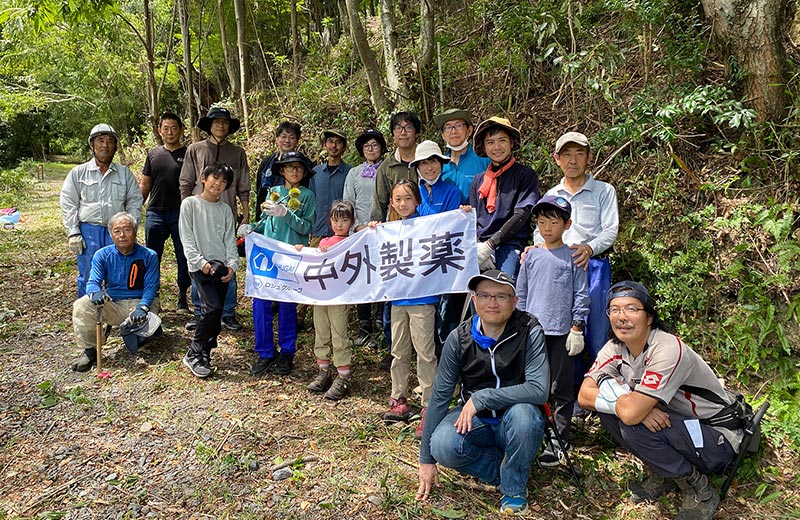
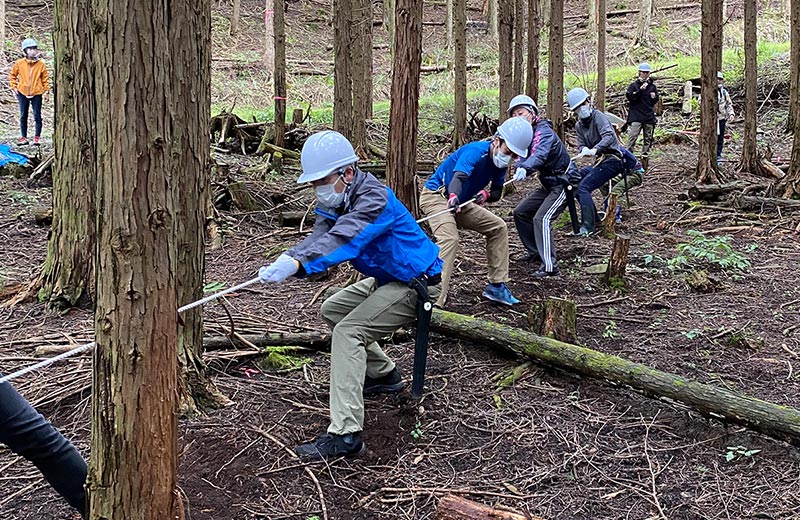
Disclosures based on the TNFD recommendations
In Jun, 2025, the Chugai group announced its support for the recommendations of the Taskforce on Nature-related Financial Disclosures (TNFD) and registered it as a TNFD Adopter. On the basis of TNFD recommendation, we have evaluated the dependence and impact of our business activities on nature.
Please see the details on the following pages.
Disclosures based on the TNFD recommendations [PDF 1MB]
For more information, click here
-

Introduction of eco-friendly product packaging materials
We consider climate change and marine pollution caused by plastic waste to be an important issue, and are engaged in initiatives to introduce eco-friendly plastic materials.
-

Environmental Conservation Initiatives at Chugai Life Science Park Yokohama – Biodiversity Conservation
